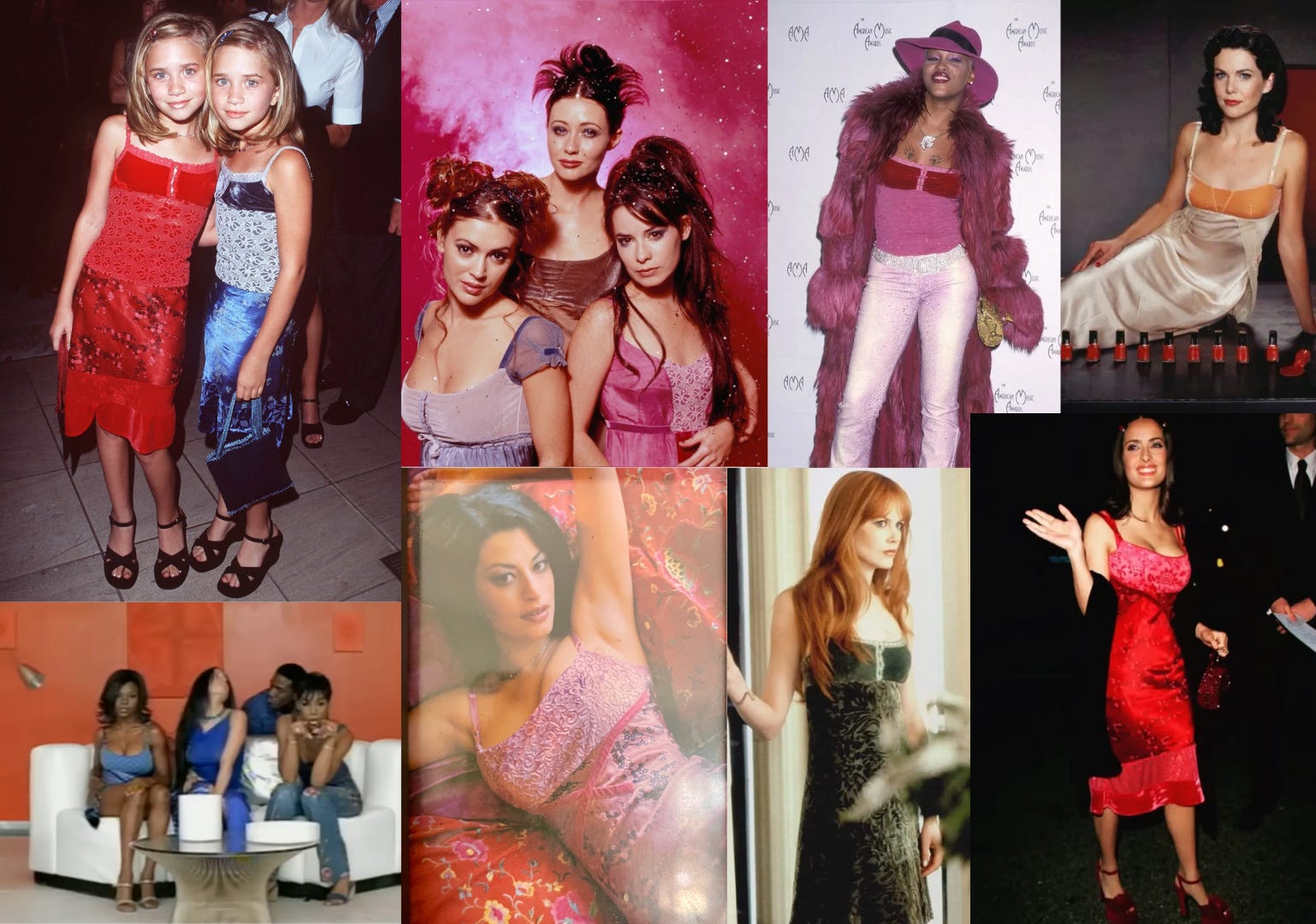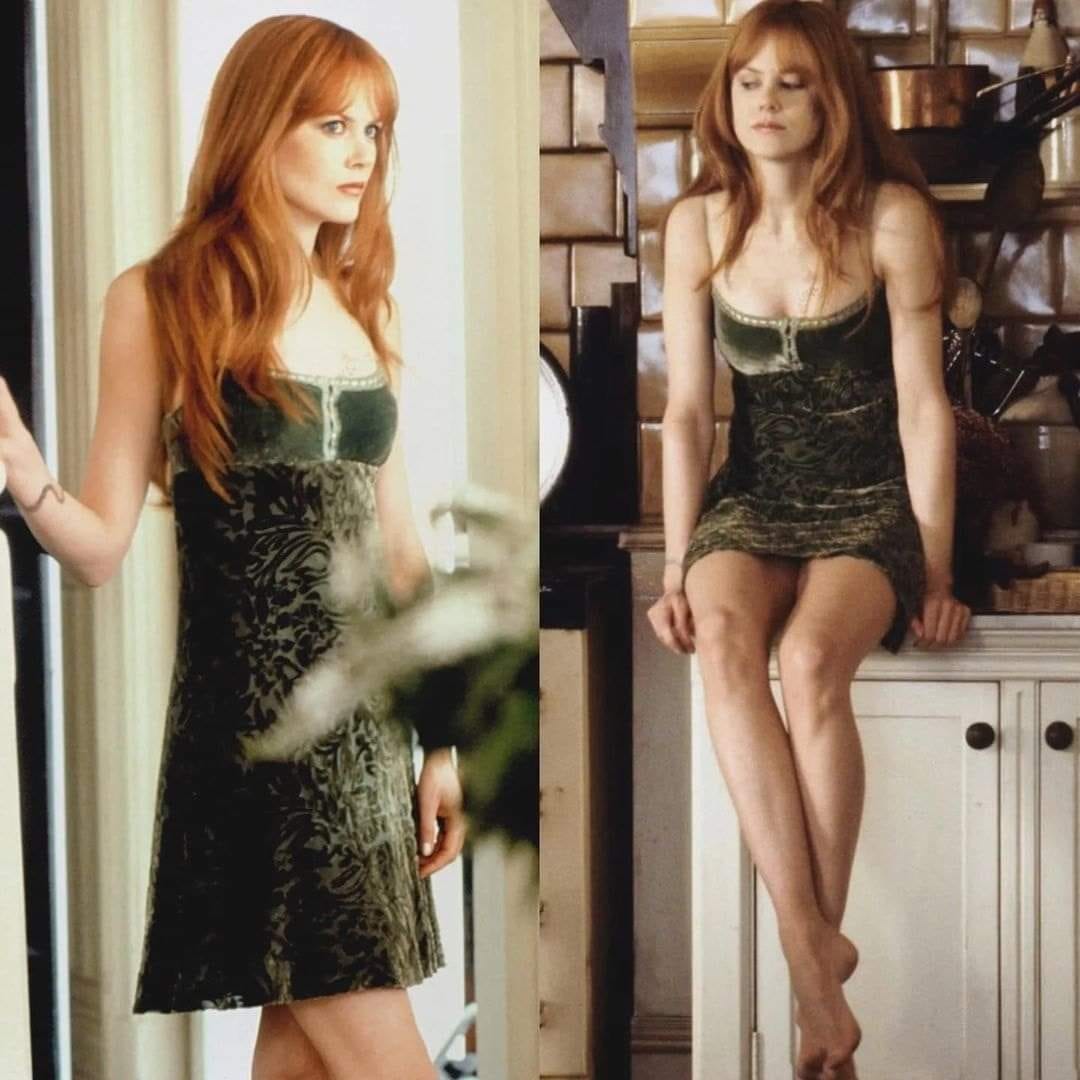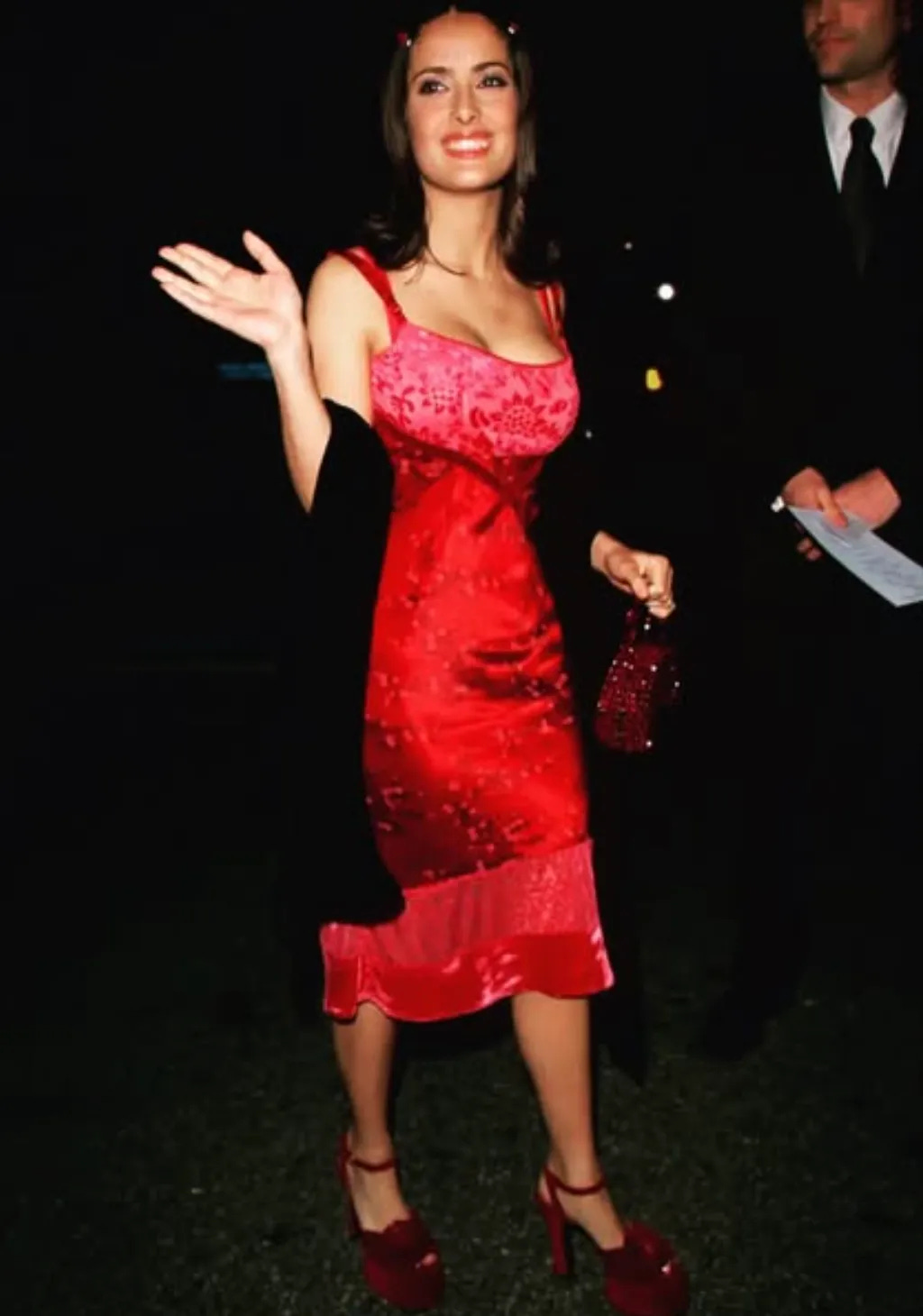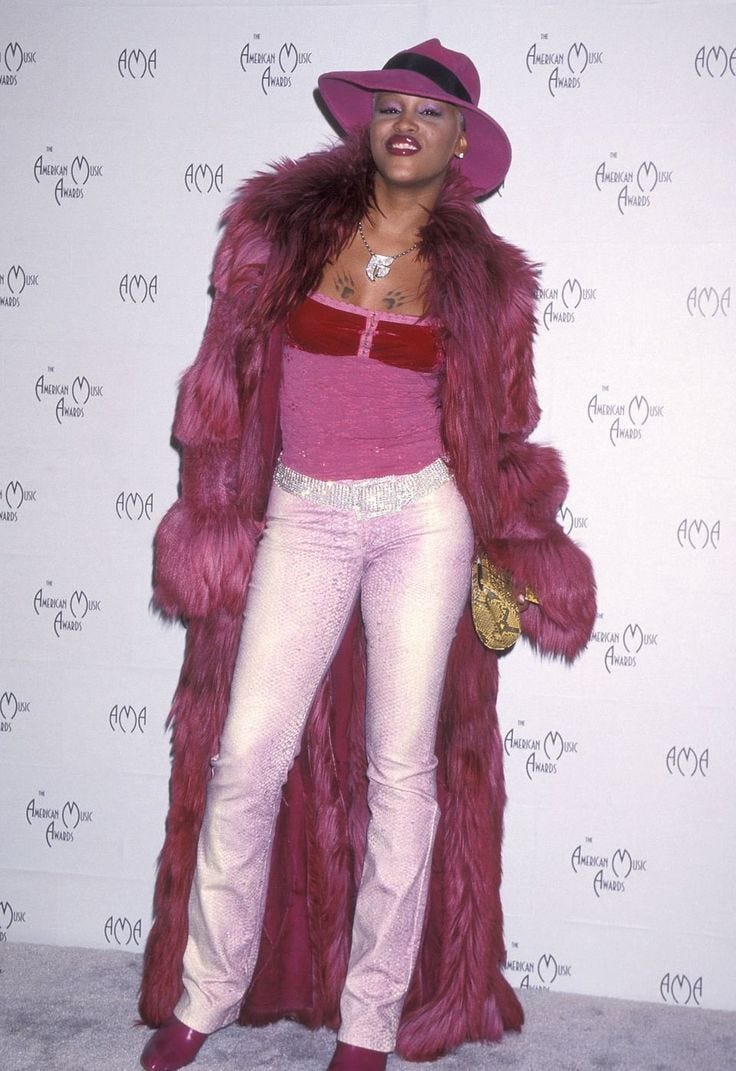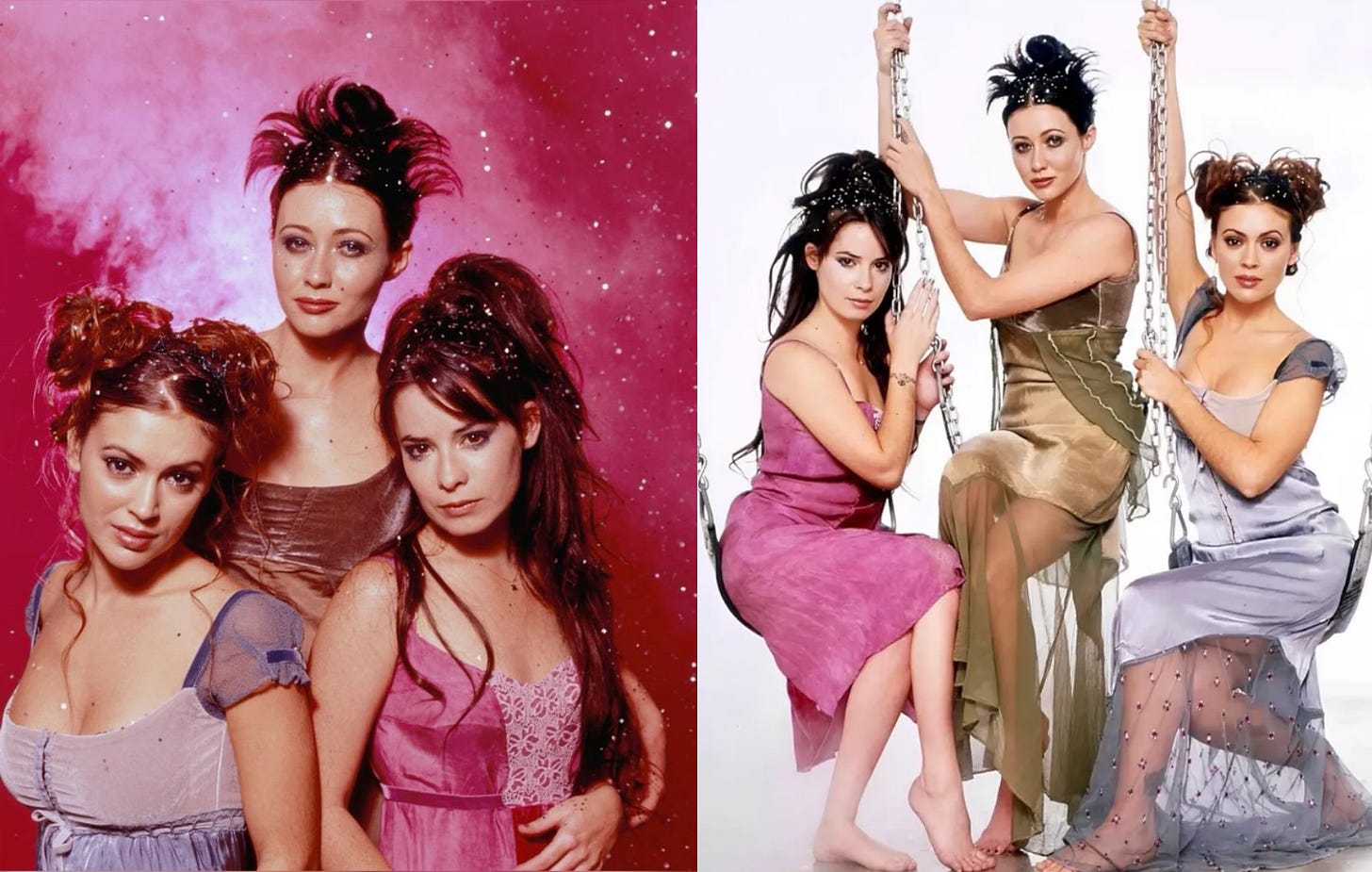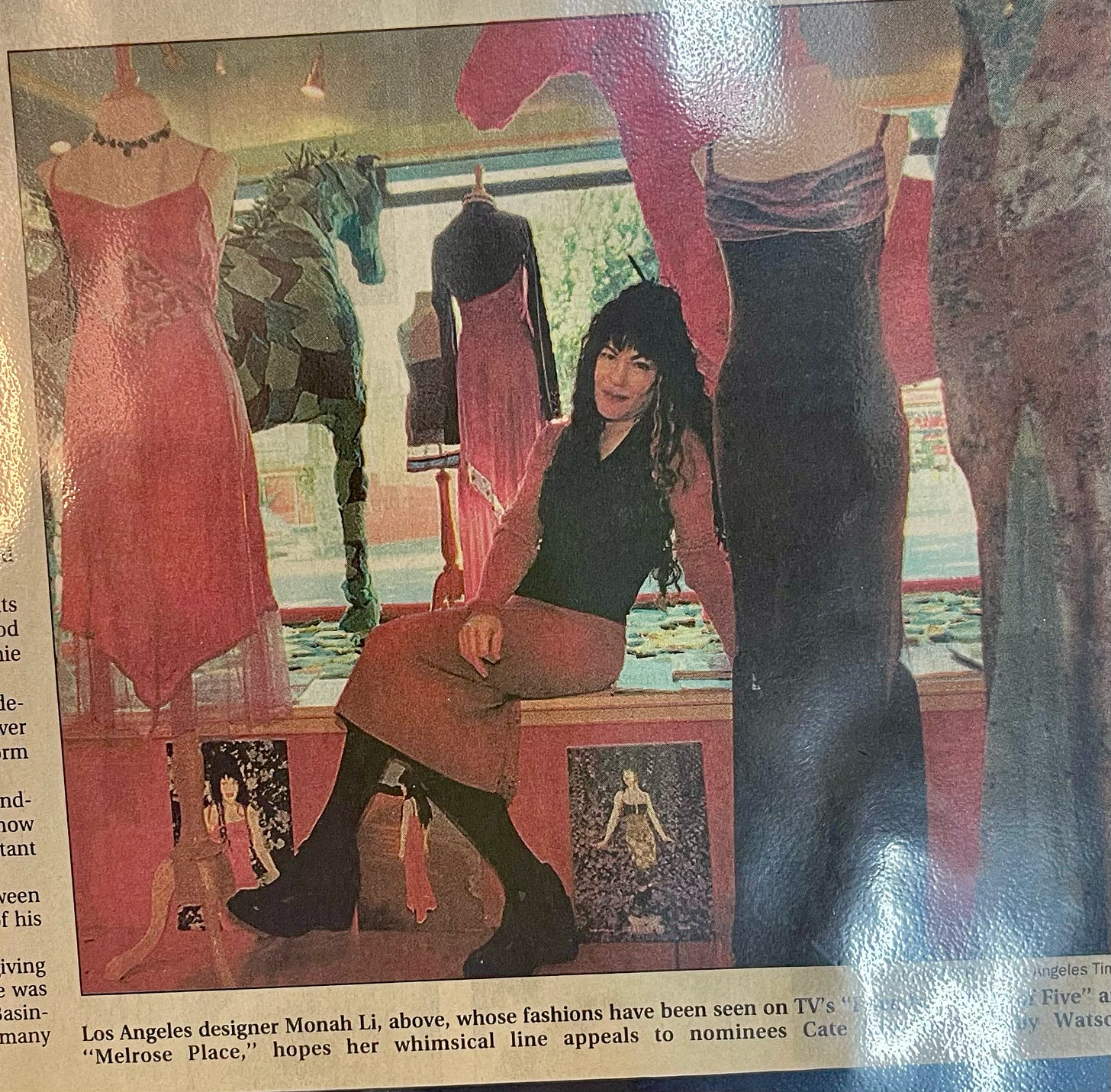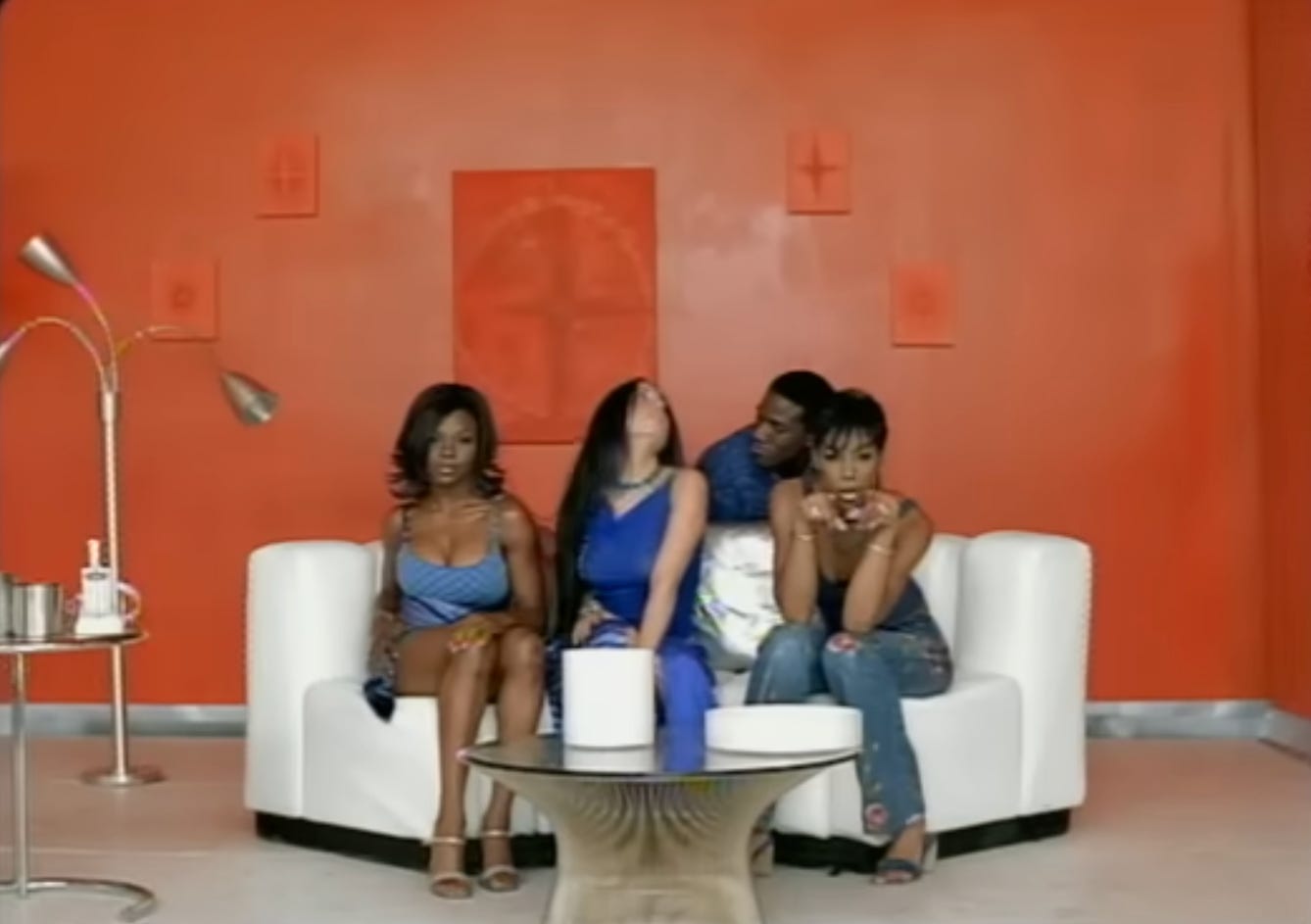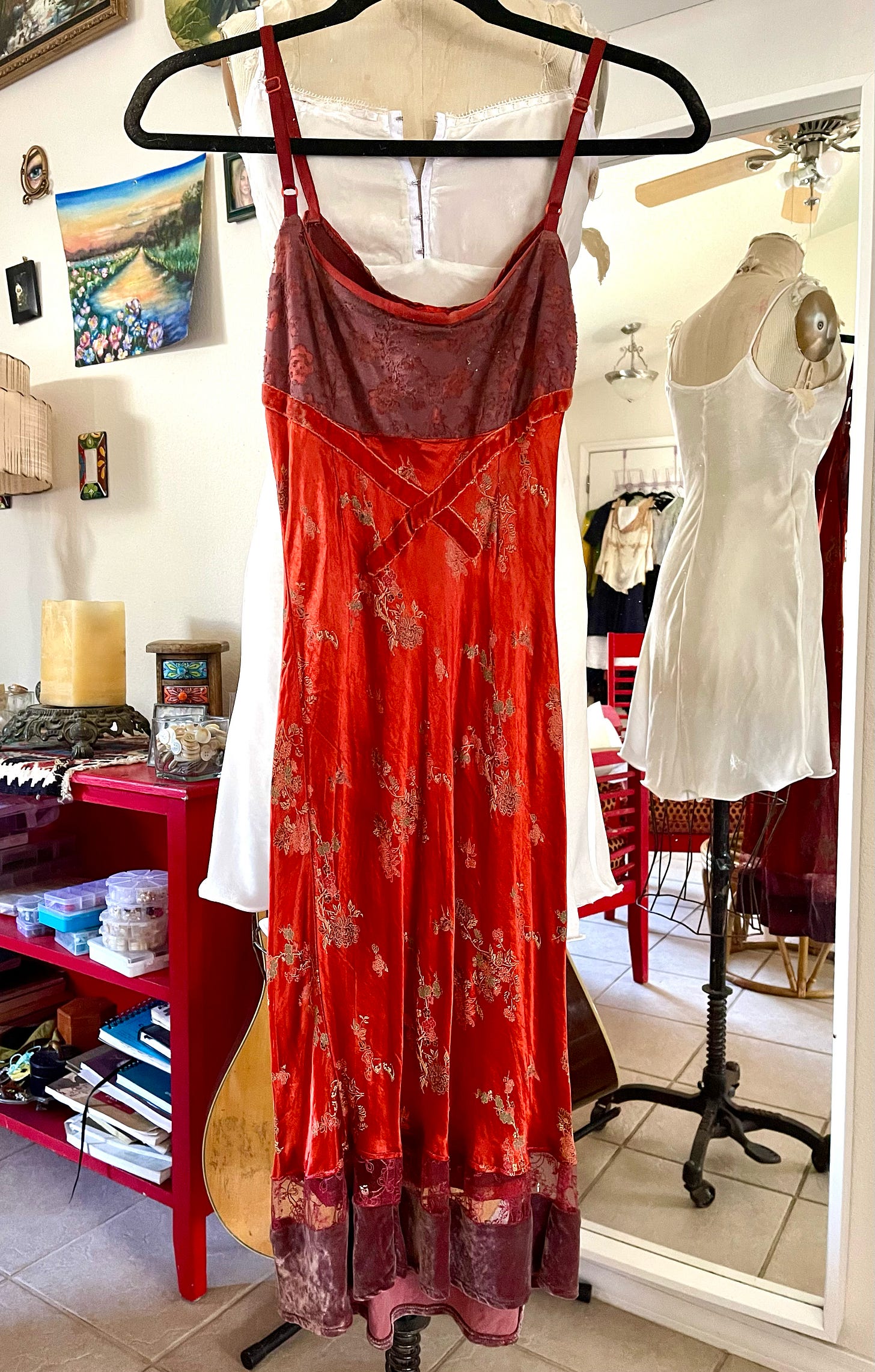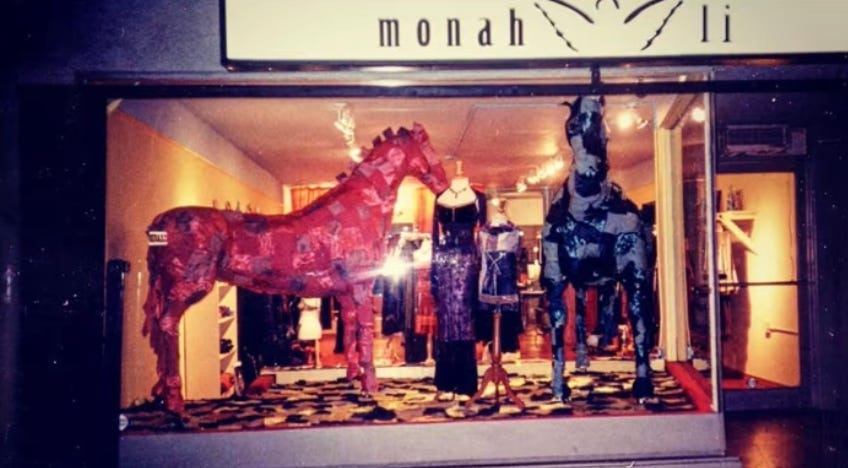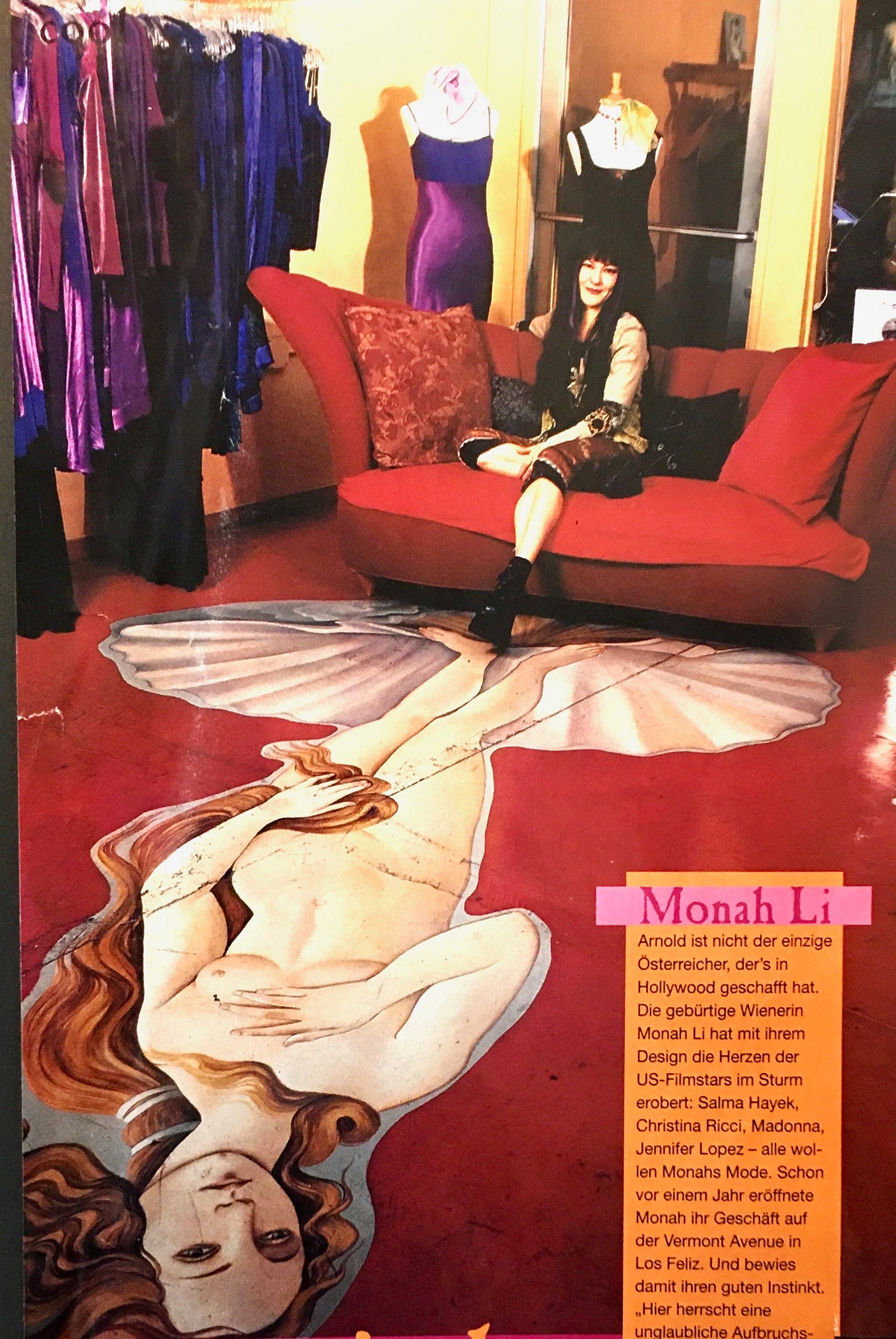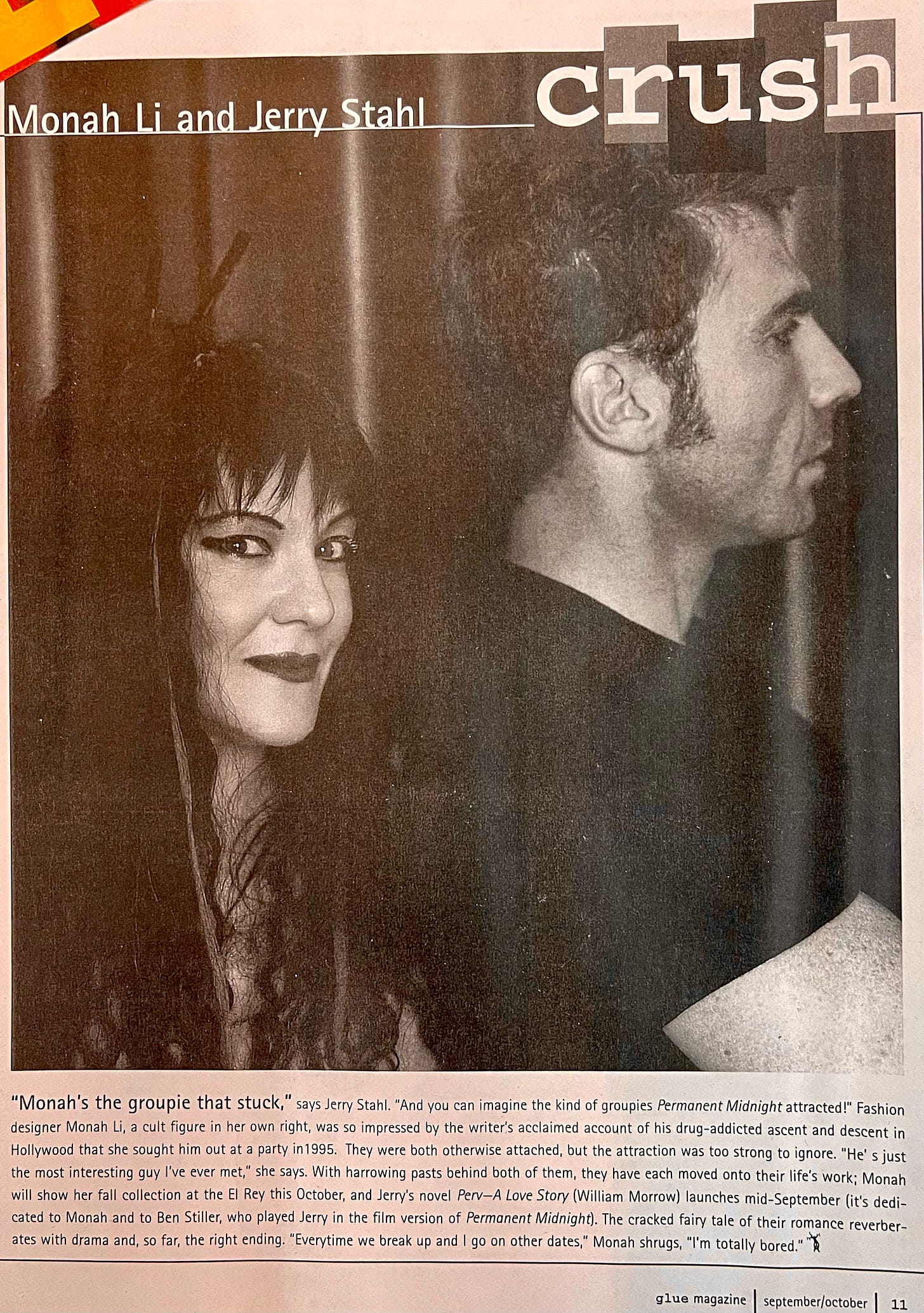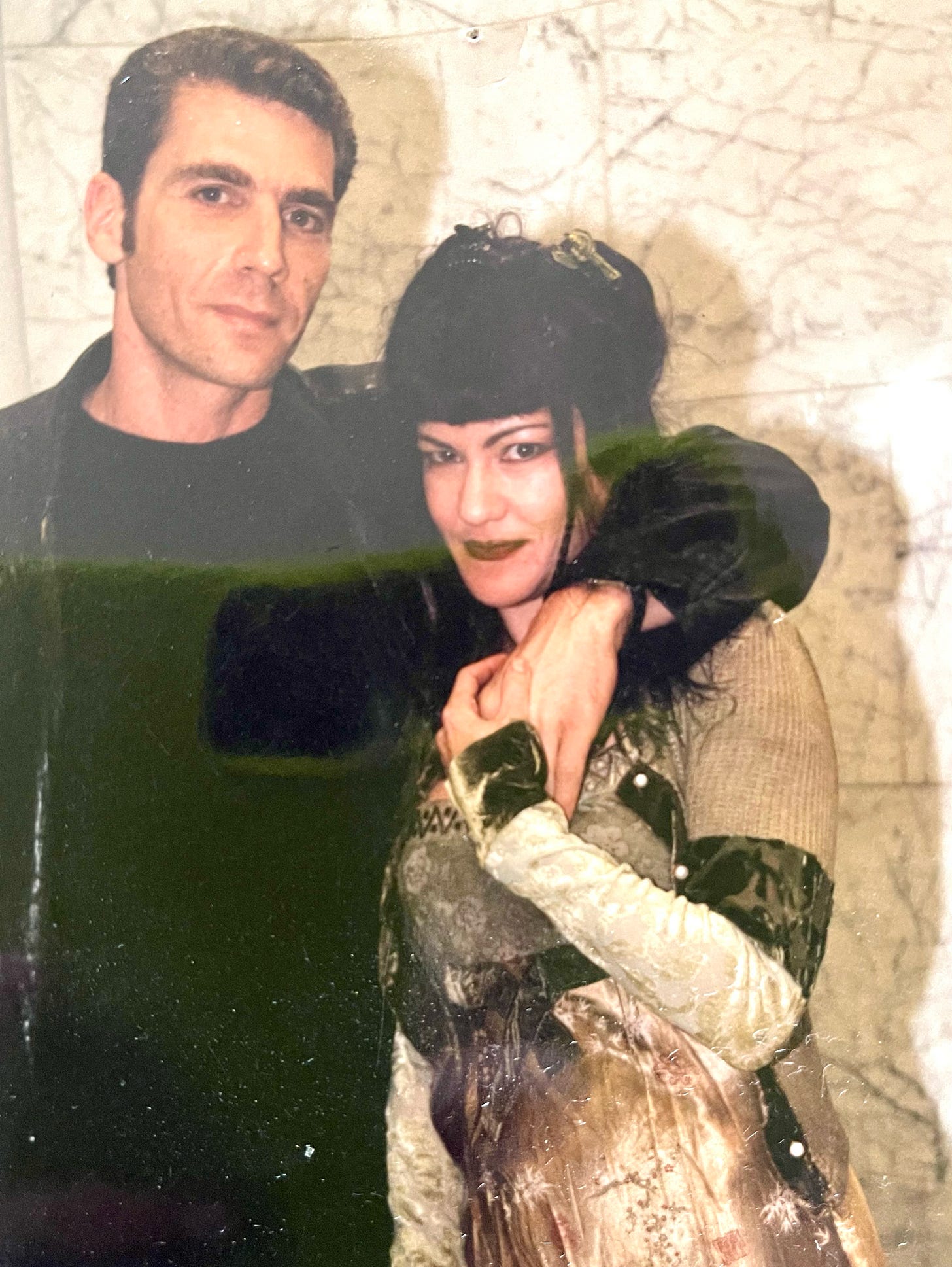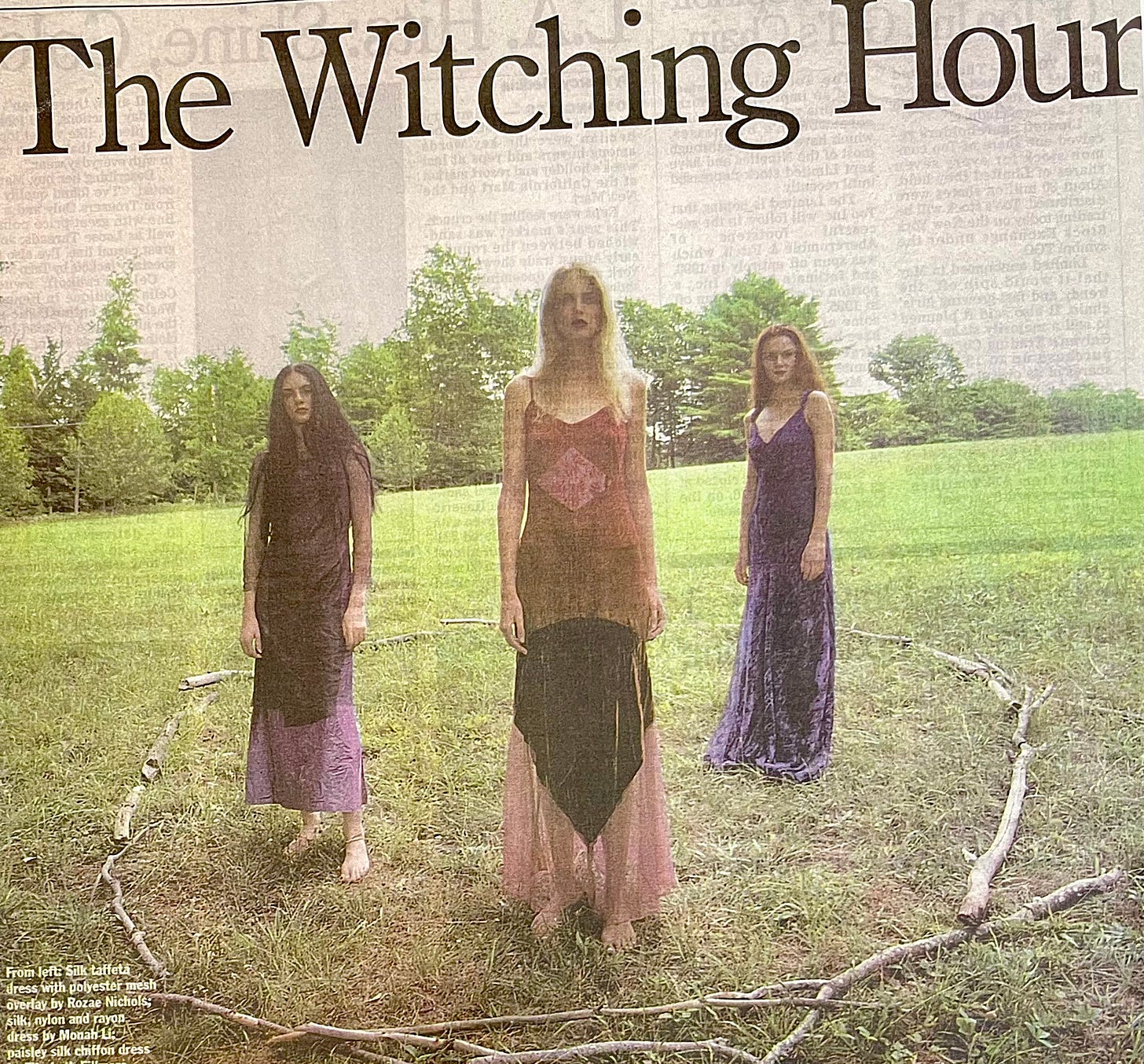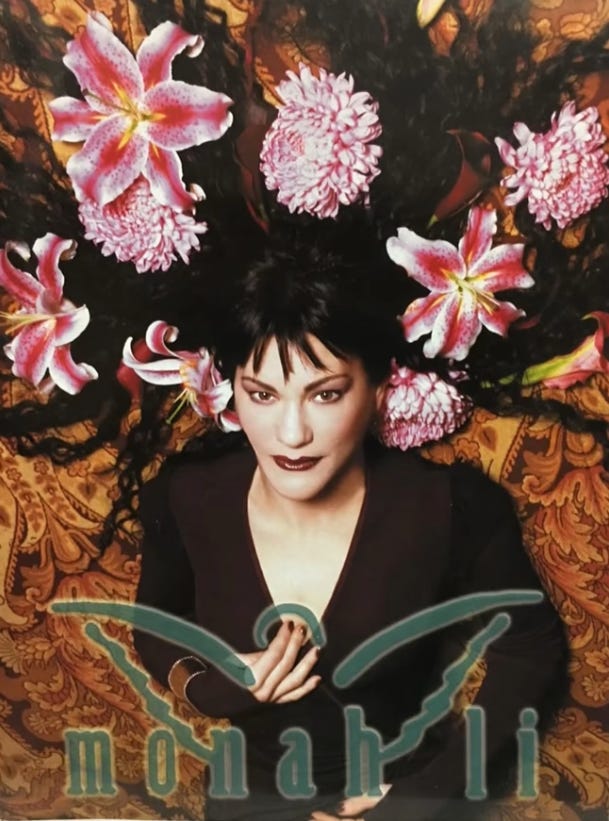the "rich bohemian" dress that flooded every celebrity's closet
an interview with monah li, the elusive designer behind the dress of every millennial girl's childhood dreams.
When I wrote about the fashion in Practical Magic (abbreviated PM here and there), I knew that it was a widely beloved classic.
However, I did not realize the extent of its influence on seasonally themed parties! A reader named Uma sought suggestions from the chat on a themed cake for a friend’s PM watch party. Folu of Unsnackable responded that she, too, went to a PM dinner party recently and made a “spiced chocolate cake with a bit of booze.” Please do share photos of your PM parties/cakes/themed decor :)
Anyways, your PM obsession will be fed today because this newsletter features an interview with Monah Li, the fashion designer who made Nicole Kidman’s iconic green velvet dress. The look didn’t get much screentime, but I think we can all agree it was unforgettable.
**The full interview is free to read, and I’ve included a special bonus at the end for paid readers as your support makes this journalism possible!! Thanks a million.**
I wanted to talk to Monah ever since I found out she was the creator of the dress. Before we get into the interview, I want to give you some context for her work beyond of the PM dress, because she was a big. fucking. deal!!!
Between 1997 and 2000, her dresses were worn by Madonna, Jennifer Lopez, the Olsen twins, Salma Hayek, Mariah Carey, Cher, Winona Ryder, Queen Latifah, Stevie Nicks, Destiny’s Child…the list goes on. It was *the* dress to have. A blogger in 2011 recounted her brand’s prominence:
“It used to be that any time you wanted to rub elbows with a celebrity, it was as easy as breezing into the funky little boutique owned by Monah Li on Vermont Avenue in Los Angeles, just off Hollywood Boulevard. Anyone and everyone was there, where she succeeded brilliantly in a part of town better known for its coffeehouses.”1
While you may not have known Monah Li before this, I am sure you *know* her dresses. Rich colors (lots of violet and ruby and fuchsia), peekaboo hook and eye closures, layers of reworked silk blanched in the white shock of 90s flash photography. Her influence also extends to the y2k Bebe aesthetic, where she worked as head designer for a year from 2001-2002.
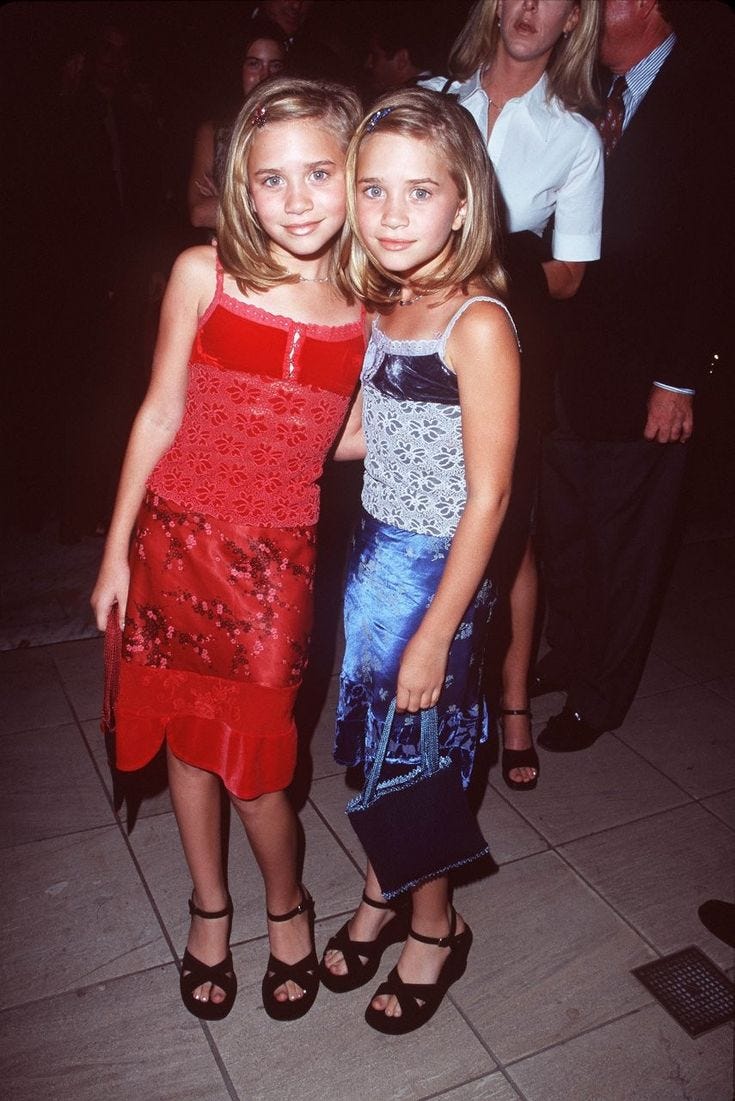
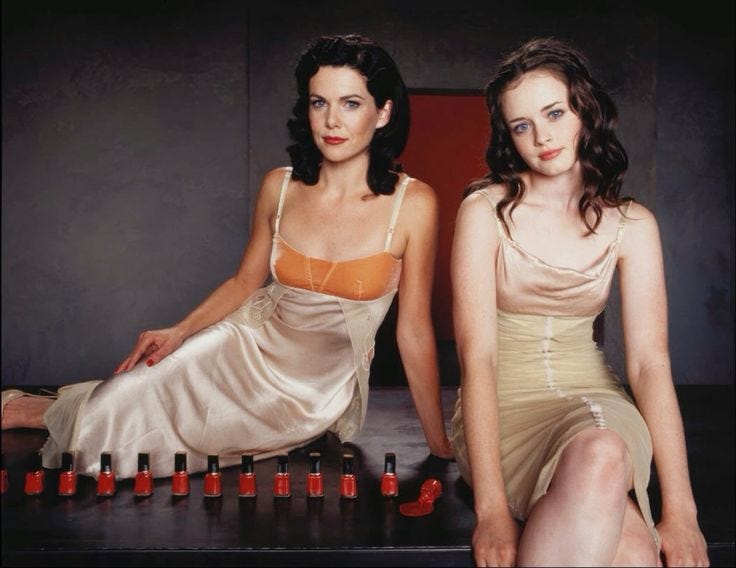
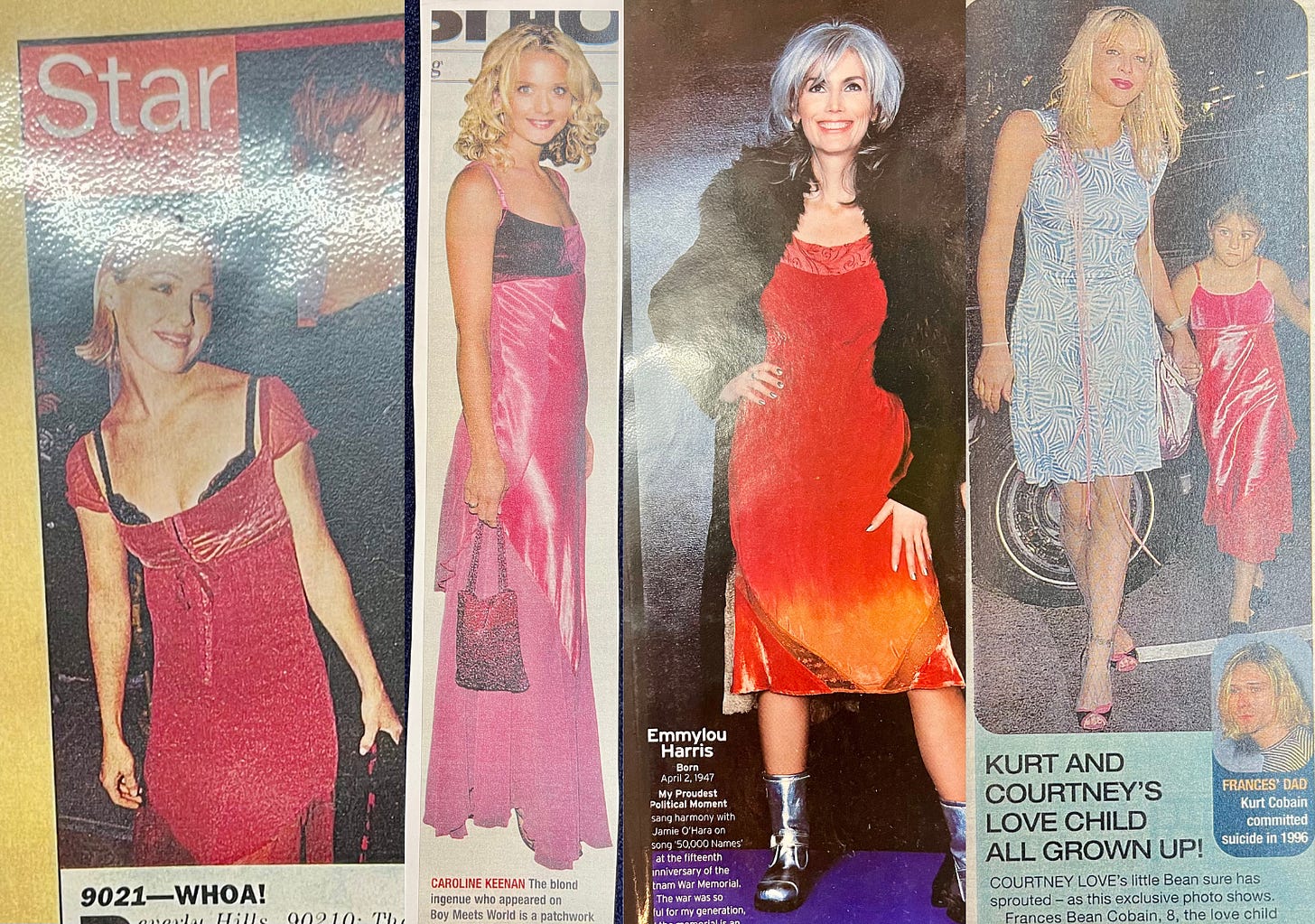
Monah’s designs defined an era. They articulated a certain dark feminine, whimsical and witchy self-expression that many girls growing up in the 90s reached for.

So why aren’t there more magazine articles covering her life and work? This puzzled me. As I did my own research for this interview, I thought to myself, “where are the Vogue/ELLE/W profiles???” Any press I could find was old—from the L.A. Times archives, abandoned blogs, or magazine clippings that Monah shared with me.
I believe her story needs to be resurfaced and canonized for a new generation. If Vogue won’t do it, then I will!
Hi, Monah. Thanks for doing this interview. I was really excited when you replied to my email.
I’m happy to talk to you about just pretty much anything. I actually like interviews, they’re always revealing something to me I wasn’t aware of until there was a question.
I learned about your work as a designer through the green dress Nicole Kidman wears in Practical Magic. But you didn’t even know your dress was worn in the movie until last year, right?
Well, I didn’t know that the movie existed. At the time it was made in ‘98, I was incredibly busy. I had a PR agency who took care of stuff like that, and often I wasn’t told. Or I was told and immediately forgot, you know?
And plus coming from Austria, growing up there before the internet, I didn’t know most celebrities. For example, I didn’t know who Stevie Nicks was when I was making a dress for her, going to her house for fittings. But I’m glad I didn’t know, because I could just be relaxed. [Stevie Nicks] had already bought many of my dresses in stores over the years, but I was hired to make a dress and coat for her for the Grammys in ‘97. Maybe ‘98? Had she won, it would have gotten a lot of exposure.
So how did you find out your dress was in the movie?
I really don’t remember. I think it was on Reddit. It could also have been my daughter. She put a little [TikTok] video together a few months ago, about all the celebrities who wore my things, and it blew up.
That’s how I find out about a lot of things. Like the Destiny’s Child music video, “Say My Name.” 80% of the video is my clothes.
Do you know where the costume designer got the dress?
Well, that dress was sold at Fred Segal. The costume designer [Judianna Makovsky] is really, really good. The way she put the dress in the movie was perfect. I think she changed the bottom of it, because it looks a little bit different than when we sold it.
In the Reddit thread about the Practical Magic Dress, you wrote a reply, recounting that “there was a time, from 1997-2000 where every time I went to the grocery store or to 7/11, I would find a picture of a celebrity inside a magazine in this dress.”
That signature dress of yours was called the X dress, right?
Yeah, but I don’t wanna call it that now cause, well, you know why.
Wait, I actually don’t.
Because of Elon Musk.
Ohhhhhh. Of course. Lol.
Anyways, the X dress developed was out of necessity because I was a small designer. I didn’t have any money behind me. In the 90s, when you wanted to buy fabric from suppliers, you had to buy their minimum yardage, which was unbelievably big, like a thousand yards per color.
I couldn’t do that. So I just bought everything in white and sewed it all together and then I dyed it afterwards. That was the only way to get different colors in my collection. I’m still doing that.
So your methods have not changed since the 90s?
Yes. I’m a one trick pony in a way. But it’s not boring, because every fiber takes the color differently, so I never know how it’ll come out. It’s still interesting.
Your path to fashion was unconventional; you learned how to make dresses as a patient in a a psychiatric treatment center. Could you give me the short version of how those events played out?
When I was a teenager, I knew I wanted to make dresses. I’m 67 now. So growing up in Austria back then, the [professional role] of designer did not even exist. I told my mother what I wanted to do, and she said, you’re not going to be a seamstress. It was out of the question.
The compromise was for me to get an engineer’s degree in textiles. It was the wrong school for me, the degree has never once been helpful.
My mother ended up staying in America for work. 10 years later, I visited her and decided to stay myself. My mother paid for two years of fashion school at the Fashion Institute of Design and Merchandising in LA.
I didn’t really speak English. I couldn’t figure out how to sign up for classes. I didn’t know where to park, so I didn’t go and instead did drugs and really stupid stuff.
Two years went by really fast. My mother said, said you’re gonna graduate soon. And a few days later, I was arrested for trying to get drugs. So that that was not good.
But I got terribly lucky. I got arrested and had to go back to Austria to do an inpatient treatment. The psychiatrist who ran the treatment center wanted to be a designer, so he ran a sort of work rehabilitation program. Every [patient] who wasn’t completely crazy had to work there from 7am to 4pm.
Was that a major turning point for you?
I was the first and only patient they ever had who actually wanted to work there. I had a moment of clarity where I realized I fucked up school. I know nothing. I have a stupid degree that I’m not going to use, and that got me straight.
So it was the best situation for me, to learn pattern making. When I came back to America, a year later, I was actually like a different person.
You had a very successful store in Los Feliz in the 90s. What was the scene like?!
Really hip and really fun. Like everything was about to explode, you know? There were so many stores on Vermont Avenue, lots of restaurants and clubs.
In a 2001 article, the L.A. Times called you the “architect of the rich bohemian look.” Was that an accurate description of your store clientele?
That’s so funny. Well, that was the word then, “boho.” It was people in the neighborhood and a lot of celebrities. It seemed like every celebrity had to have that dress.
It seems like you weren’t actively pushing your pieces to be worn by celebrities, but it happened organically.
Yeah, I mean, I would’ve liked if somebody wore my stuff to the Oscars. I think the 90s was the only time that that could have happened, because a lot of stylists wanted to feature newer designers and not just Armani or other big names.
What was your life like outside of work?
I lived in a really cool place, like in a loft, that was next to the LA River. It was owned by a sculptor, so there was lots of sculptures in the garden. I lived upstairs. Under me was a singer-songwriter who became kinda famous later. Her name was Mia.
And I was dating a really hot writer. He was like the talk of the town then, you know? We were usually featured in the same magazines, just different categories.
<laugh> It was fun.
So everyone was working on their creative projects.
And everyone was about to get successful too. Being in magazines and the feeling of like, oh, everything’s about to explode. But that while it was happening, I was not aware. Because I was too busy to be impressed by it, you know?
You said “boho” was the trendy word back then to describe your designs. But is there a better word that you prefer?
Honestly, I have not found a word yet that I like. “Upcycling” does not sound as good, but I don’t know of a [more accurate] word. “Patchwork” sounds like an excuse to do ugly stuff.
If someone thinks of a word that sounds good, let me know.
I have the luxury of making one dress at a time.
Tell me about your current business model. Every order is custom-made, you don’t do production. You don’t use any polyester or nylon. Why do you operate this way?
I’ve had corporate design jobs in my life, so I’ve seen the other side. Even the X dress, at one point we produced a few hundred thousand of it so I had to learn how to do production.
I don’t like how things are done in the industry, with the amount of fabric that gets thrown out from every cut. And I mean, I don’t use any polyester or nylon because it’s so bad for the environment. I like to cut up old things and use whatever is still good.
How many custom dress orders are in your queue right now?
I have about 30 orders that people are waiting for, and I’ve made 6 so far.
A custom X dress costs $340—the same price it was sold for in 1998. Why haven’t you raised prices?
It seems like most of the girls who want that dress right now, they are in their twenties. I don’t even understand how this is happening. They’re artists, really young, cute girls. In your twenties, you usually don’t have lots of money.
I’ve really been wondering, and it makes me feel guilty sometimes.
I think what’s happening is that a younger generation is re-discovering 90s fashion and culture…maybe watching Practical Magic for the first time and falling in love with your dress. And there are a lot of people who are sick of mass-produced clothing. They are willing to wait months and save up for something really beautiful and well-made. I know I am.
I feel like if there was a way to make this dress faster, in cheaper fabrics, I would. As long as it’s not polyester. But I mean, it’s just not possible.
That dress is really hard to make.
Honestly, we should be waiting 3+ months for a dress to be made. It’s the antithesis of instant gratification shopping.
Yeah. I know what I do is a total luxury project. It’s not something every company can do. It’s very slow and expensive, but I’ve done my corporate gigs.
I’m not retired, not by far, but in a way I am.
I have the luxury of making one dress at a time.
Thank you Monah!!!! We love you.
xo viv
Thanks for being here. You can find me on IG and TT. My wardrobe pieces and recs are saved here—unless it’s vintage, of course ;)
As a bonus for paid readers who want to order a custom dress, I asked Monah about the best way to reach out, as she tries to stay off social media and is a generally offline person :)
Below the fold is an email template you should use, and what to expect.



